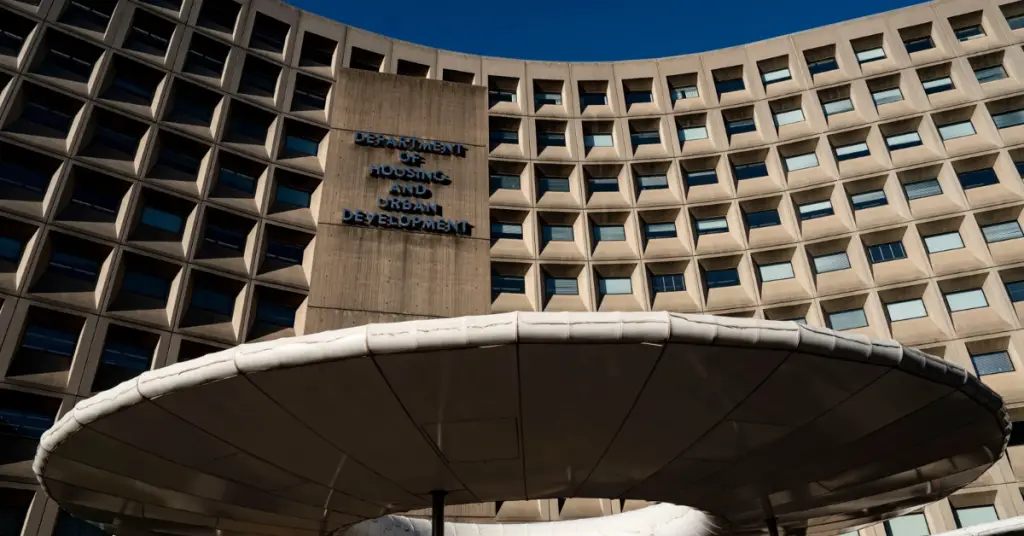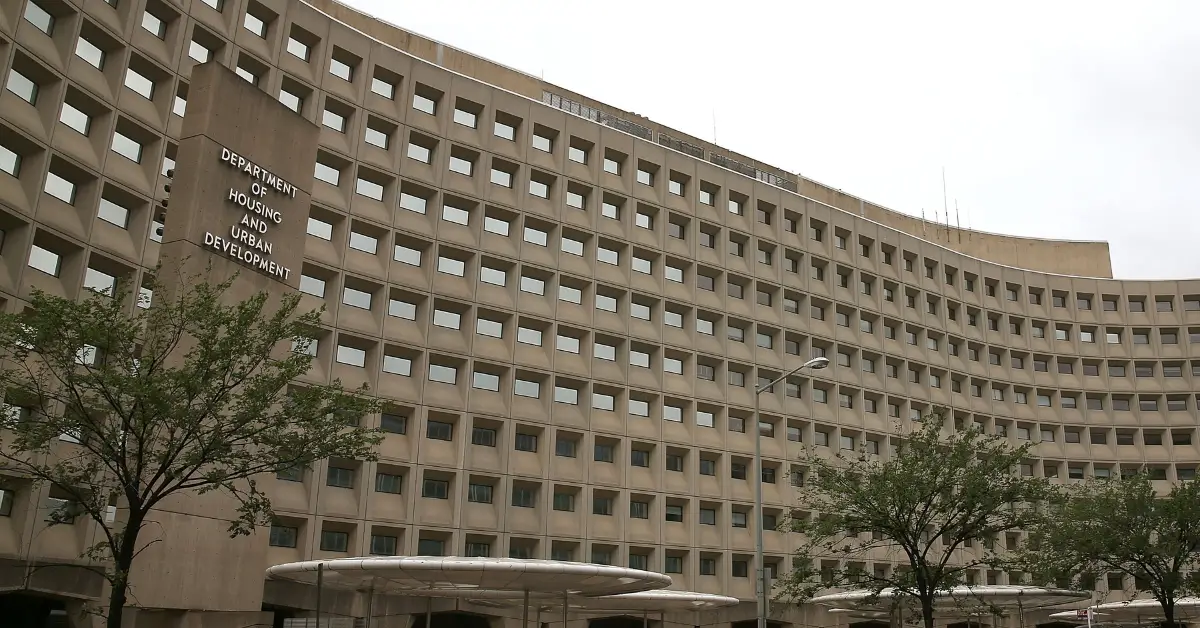The Department of Housing and Urban Development (HUD) has taken a significant step in the Trump administration’s real estate strategy by listing its headquarters in Washington, D.C., for sale. Currently, only half of the HUD building in the heart of D.C. is being utilised, prompting the agency to join a growing list of federal properties marked for sale or relocation.
The HUD headquarters, located in the Robert C. Weaver Federal Building in Southwest D.C., is the first major federal agency building to be included in the General Services Administration’s (GSA) list of “assets identified for accelerated disposition.”
This move is part of a broader initiative aimed at downsizing the federal government’s real estate footprint. Under the Trump administration, there has been a concerted effort to sell off or relocate government properties that are either underutilised or expensive to maintain.
The HUD headquarters’ inclusion in the GSA’s list marks a milestone in the effort to reduce the size of the federal government’s holdings in the nation’s capital. This is not the first time such efforts have been made, but it represents a significant shift in how federal agencies are being managed.
HUD’s building has long faced criticism for its underuse and high operational costs. With only half of the building being occupied, it has become clear that the federal government is paying for more space than it needs. This decision to sell the building aligns with a growing desire to reduce waste and streamline government operations.
In addition to being underutilised, the building faces significant maintenance challenges. HUD estimates that it requires $500 million in deferred maintenance and modernisation. The agency also spends more than $56 million annually on rent and operational expenditures, making the building’s upkeep a significant burden on taxpayers. Given these circumstances, it’s not surprising that the Trump administration has decided to list the HUD headquarters for sale.
The sale of the HUD building is part of a broader plan to relocate some federal agencies outside of Washington, D.C., which President Trump has promoted as part of his strategy to “clean up the swamp.” In his 2024 campaign, Trump argued that relocating federal agencies out of D.C. would reduce government waste, lower costs, and enable the government to function more effectively. He believes that by relocating agencies to more affordable locations, federal employees could be closer to the people they serve, and agencies could operate with greater efficiency.
This vision of relocating federal agencies outside of D.C. has gained traction among Republicans, but it has also faced pushback from Democrats. Some lawmakers are working to block these efforts, fearing that relocating agencies could lead to job losses and economic instability in the District of Columbia.
As part of this opposition, legislation has been introduced in Congress to halt the sale of federal properties, including the U.S. Department of Housing and Urban Development (HUD) headquarters. These opposing forces are likely to continue clashing as efforts to reduce government real estate holdings move forward.
Despite the political opposition, HUD remains committed to the idea of downsizing government operations and moving toward more efficient, purpose-driven facilities. HUD Secretary Scott Turner made a statement regarding the move, emphasising that the agency is focused on creating a workplace that reflects efficiency, accountability, and purpose. He also mentioned that HUD is working with the GSA to identify the best location for the agency’s future headquarters, with the Washington, D.C., metro area still among the top options under consideration.

The Trump administration has been vocal about its desire to relocate federal agencies to lower-cost locations, and the sale of the HUD headquarters is a critical step in this process. In the past, several federal agencies have faced challenges in finding suitable locations for their operations. The HUD headquarters’ sale is part of a broader plan to identify government properties that can either be sold or repurposed, while relocating agencies to areas with lower costs of living and operational expenses.
This effort to downsize government real estate is not limited to the Department of Housing and Urban Development (HUD). Earlier this week, President Trump signed an executive order that rescinded two prior executive actions implemented under the Carter and Clinton administrations, which had prevented federal agencies from relocating to lower-cost facilities.
Trump’s directive emphasized that federal agencies should have the flexibility to relocate if it would lead to better outcomes for taxpayers and the public. By moving agencies outside of Washington, D.C., he argued, the government could reduce costs and increase efficiency.
Although HUD’s headquarters is the first major federal agency to be listed for sale, it may not be the last. The Department of Agriculture has also been exploring the possibility of relocating its headquarters outside of D.C., according to several officials familiar with the plans. Other agencies may follow suit if the strategy proves successful and politically viable.
While the sale of the HUD headquarters building is a step toward reducing the federal government’s real estate footprint, the relocation process is still in its early stages. HUD has indicated that it is still evaluating its options and has not yet finalised a location for the new headquarters. The agency has made it clear that it is committed to finding a more efficient and cost-effective solution for its operations, and that the process will take time.
The Robert C. Weaver Federal Building, which currently houses the U.S. Department of Housing and Urban Development (HUD) headquarters, has been a fixture in Washington, D.C., for decades. It was named after Robert C. Weaver, the first African American to hold a Cabinet position, and has long served as the agency’s main office.
However, with rising maintenance costs and underutilization, it has become clear that the building no longer effectively serves the agency’s needs. The decision to sell the building marks a significant turning point in the agency’s history and in the broader efforts to reform the way the federal government operates.
As the Trump administration continues to push for the relocation of federal agencies, the sale of the HUD headquarters is likely to be just the beginning. Other government buildings could soon be listed for sale, and the landscape of federal operations may look significantly different in the years to come. However, the road to these changes will not be without challenges. Political opposition, logistical hurdles, and public opinion will all play a role in shaping the future of government real estate in Washington, D.C.
Disclaimer: This article has been meticulously fact-checked by our team to ensure accuracy and uphold transparency. We strive to deliver trustworthy and dependable content to our readers.




